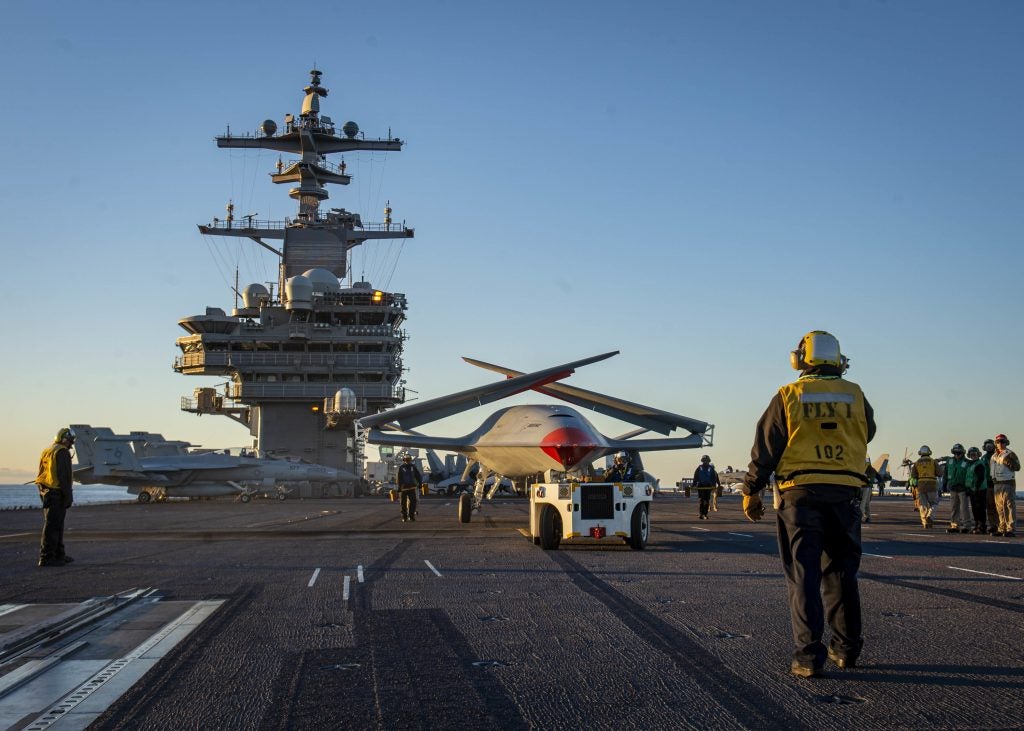MQ-25 Stingray Completes Initial Carrier Deck Demonstration
The United States Navy has completed an Unmanned Carrier Aviation Demonstration of the MQ-25 Stingray unmanned aerial tanker aboard USS George H.W. Bush.
The demonstration was conducted by a government team working alongside MQ-25 manufacturer Boeing as well as Lockheed Martin. Both the MQ-25 T1 test asset and its ground control system were tested during the demonstration, evaluating the MQ-25 system’s integration into the carrier environment.
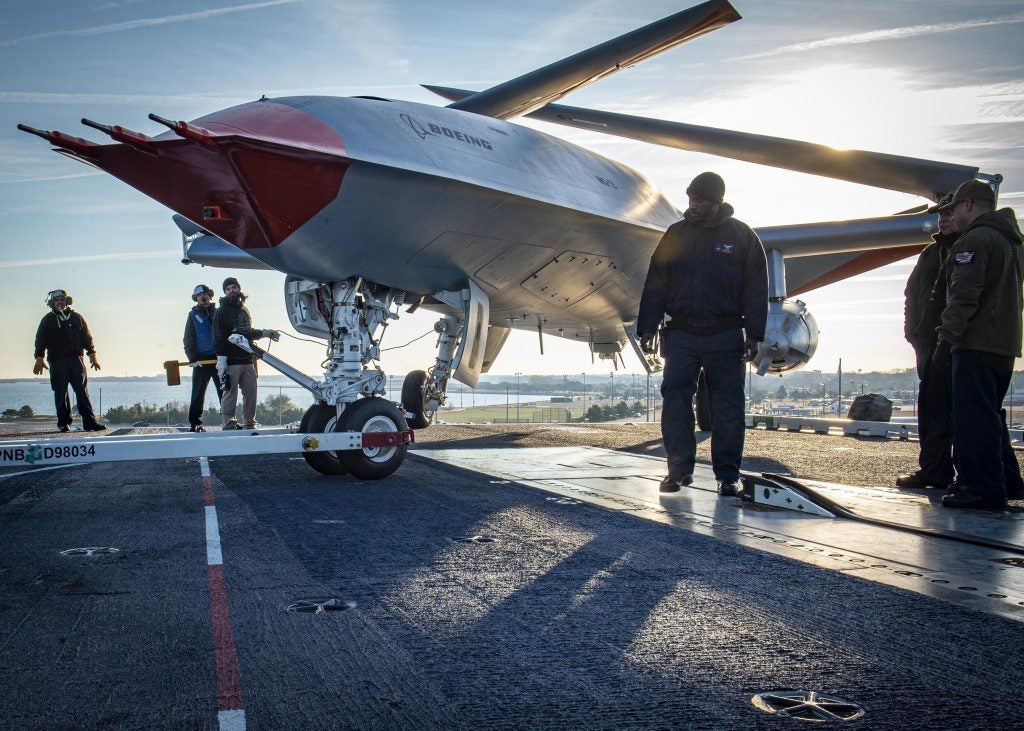
“There is no better way to determine the success of a carrier aircraft design and its integration into the air wing than to put that new aircraft through testing at sea,” said Capt. Chad Reed, Unmanned Carrier Aviation program manager. “I am extremely proud of our team for the stellar execution of both engine and aircraft tests, as well as the approaches flown in a surrogate aircraft. It’s an exciting time as we progress toward the air wing of the future.”
Lockheed Martin was responsible for installing the prototype MD-5 ground control station in the Unmanned Aviation Warfare Center “control room” while the USS George H.W. Bush was in port. Cmdr. Karl Orthner, UCA mission control station installation lead said that the first-time installation of the control station “gave the chance for leadership, test pilots, and future air vehicle operators to experience the look and feel for how the MQ-25 will operate onboard a carrier as well as inform the program office on items to consider for future UAWC layout development.”
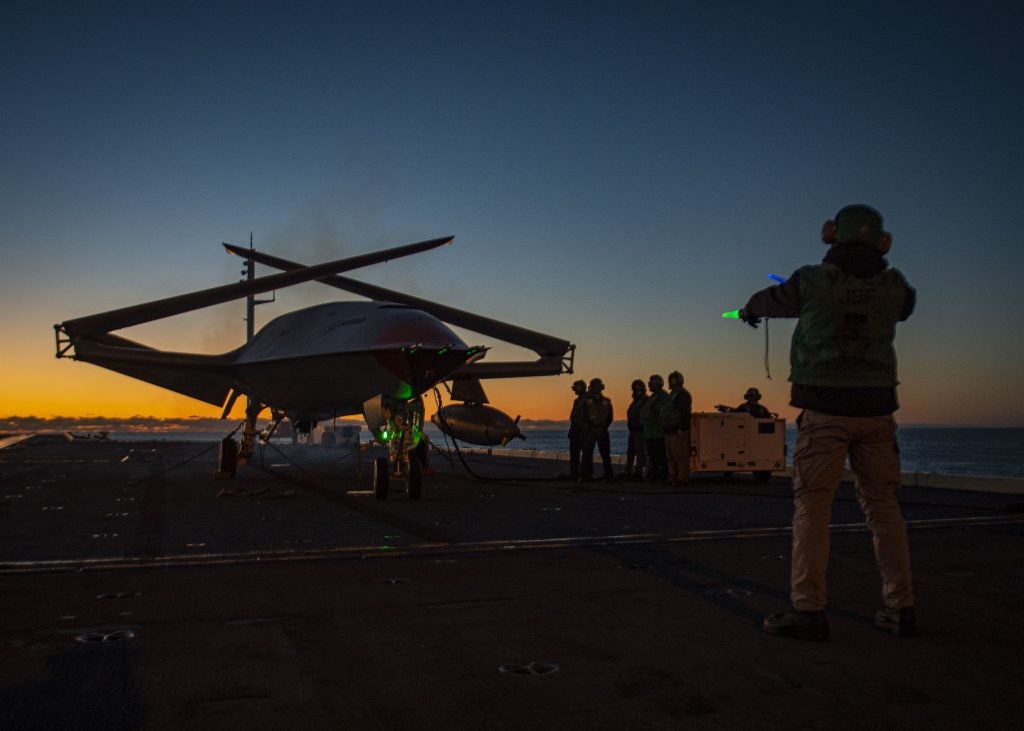
Once underway, the MQ-25 completed a series of tests evaluating the functionality and capabilities of the drone’s deck handling system during both day and nighttime operations, with maneuvers tested including taxiing and parking on the flight deck, connecting to the catapult, clearing the landing area and parking on the deck. Additionally, data on the effects of deck motion and wind over deck on MQ-25 controllability and its propulsion system was collected.
MQ-25 “deck operators” used Boeing’s new Deck Control Device throughout the evaluation of the deck handling system. The deck operators were “co-located” with Navy “yellow shirt” taxi directors, providing control inputs that corresponded to the yellow shirt’s taxi directions. Boeing says that the handheld Deck Control Device is simple and easy to use, having been designed “specifically for a generation of sailors who natively understand such handheld technology and have experience with controllers used in the gaming industry today”.
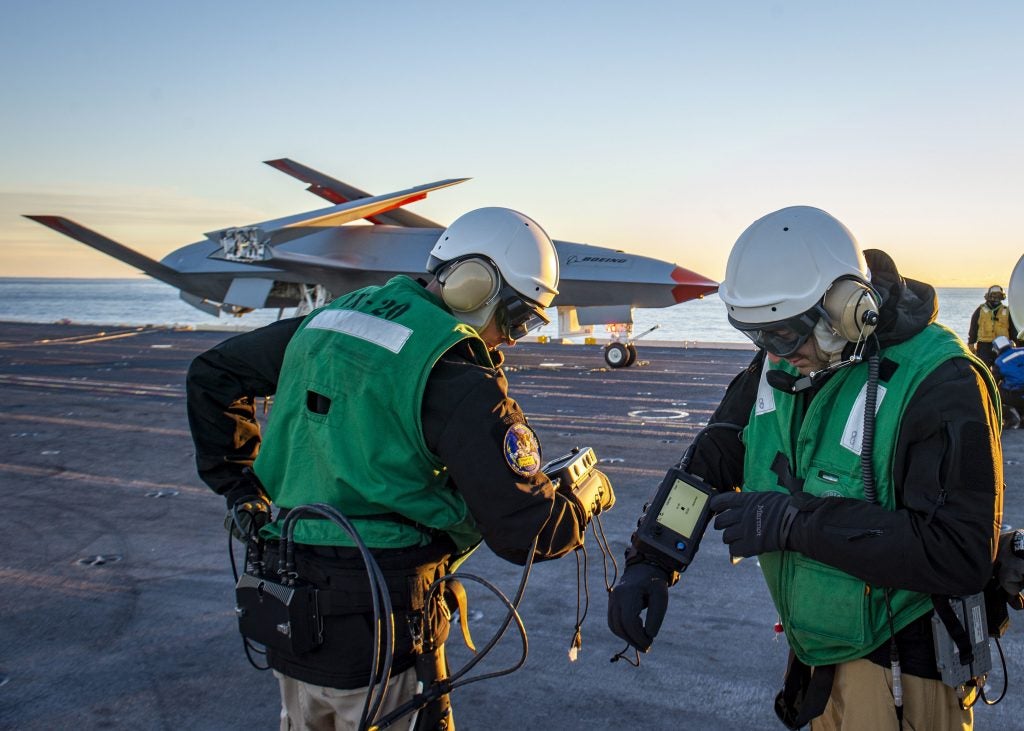
According to the Navy, the taxi director and deck operators will be able to taxi operational MQ-25s on the carrier flight deck to the catapult launch position, as well as to a parking location after landing. While airborne, the MQ-25 will be controlled from the UAWC, from which the air vehicle operator will execute a pre-planned mission.
Also conducted during the demonstration was the first Joint Precision Landing System (JPALS) surrogate flight with a King Air. According to Reed, ship motion data collected during the first representative hardware and software approaches will be extremely valuable in refining the software used.
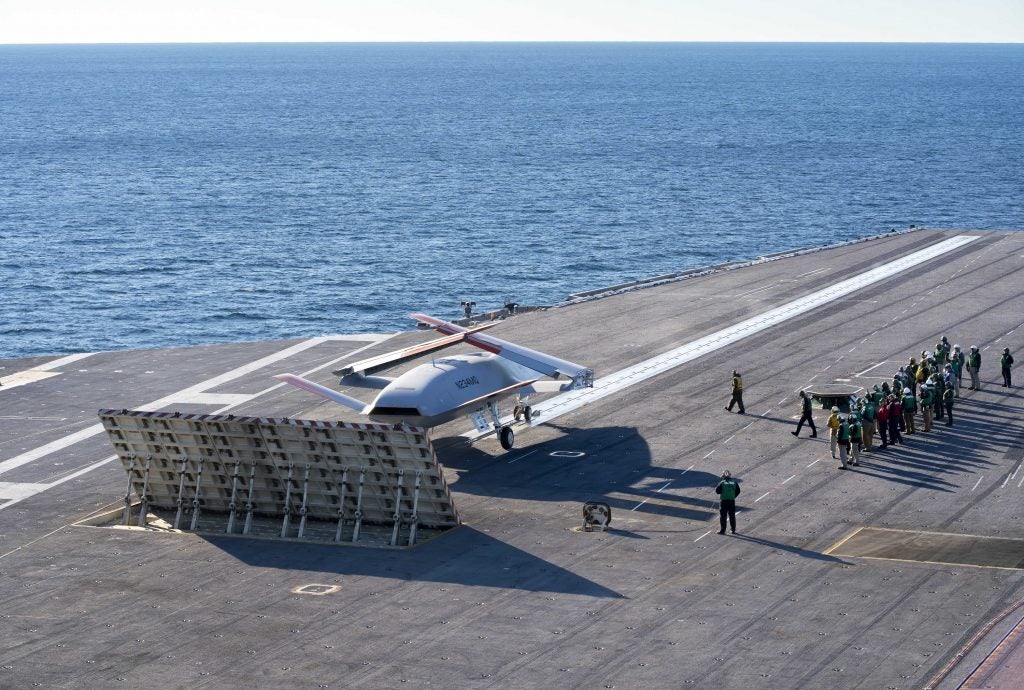
“The Navy gave us two key performance parameters for the program – aerial refueling and integration onto the carrier deck,” said Dave Bujold, Boeing MQ-25 program director. “We’ve shown that the MQ-25 can meet both requirements, and we’ve done it years earlier than traditional acquisition programs.”
The deck handling trials of T1 started on December 2, following a two-year flight testing program that saw the MQ-25 prototype successfully refuel an F/A-18F Super Hornet, an E-2D Advanced Hawkeye and an F-35C Lightning II in three separate tests.

